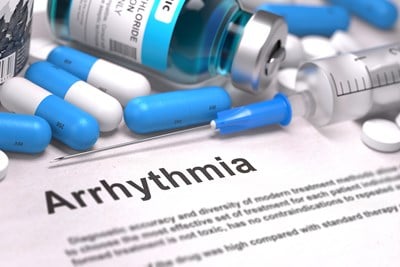Tachycardia is a condition in which the heartbeat is too fast because of a disruption of the signals that cause the heart to beat. The symptoms of tachycardia are largely a result of too little oxygen reaching the body, because the blood is pushed out too rapidly. Although not every case of tachycardia exhibits symptoms, perhaps its most obvious signs are an extremely rapid pulse rate (over 100 beats a minute) or heart palpitations (the heart beat feels irregular and uncomfortable).
The lack of oxygen may cause dizziness, fainting, chest pains, or shortness of breath. Some of these symptoms are similar to bradycardia—an abnormally slow heartbeat—and other heart conditions. If you notice persistent episodes, seek medical advice.
Tachycardia Causes
Quite a variety of issues may cause tachycardia. It may be due to trouble with the heart itself, underlying conditions, or external factors. Damage or disease to the heart, whether acquired or congenital (present at birth) may be problematic. Hypothyroidism, anemia, high blood pressure, a fever, or extreme sudden stress may induce the issue. Additionally, an imbalance of electrolytes and some prescription medications can play a role. Certain recreational drugs, smoking, and excessive consumption of alcohol or caffeine may also result in tachycardia.
Types of Tachycardia
There are multiple types of tachycardia. Although there are numerous subsets, according to the American Heart Association, the three main types of tachycardia include:
- Atrial or supraventricular tachycardia: Abnormal signals cause weak and disorganized, and sometimes overlapping, signals in the atria, above the ventricles.
- Sinus tachycardia: The heart rate may be rapid but it is also stable.
- Ventricular tachycardia: The lower chambers of the heart beat faster than normal, which can be life threatening if not diagnosed and treated promptly.
Tachycardia Diagnosis
As with many heart conditions, an electrocardiogram (EKG or ECG) is generally used to diagnose tachycardia. Small sensors are attached to the body, which then monitor and record the electrical impulses being sent out, which doctors can then study for abnormalities. Along with a physical exam and medical history, this can determine if tachycardia is present, which type it is, and what's causing it.
Tachycardia Treatment
Regardless of the cause of tachycardia, the goal of treatment is to slow the heartbeat. There are various methods to achieve this. Vagal maneuvers involve specific movements to influence the vagus nerve, which can correct rapid beats. Medications are also available in pill or injection form. Cardioversion, or sending an electrical shock to the chest, may be used in emergency situations when vagal maneuvers and medication do not work. Prevention of future episodes of tachycardia may involve medication, catheter ablation, or a pacemaker (a permanently implanted device that controls unruly heartbeats). More extreme alternatives may include open heart surgery or an implantable cardioverter-defibrillator, which monitors the heart for times when it needs to deliver electrical shocks.



